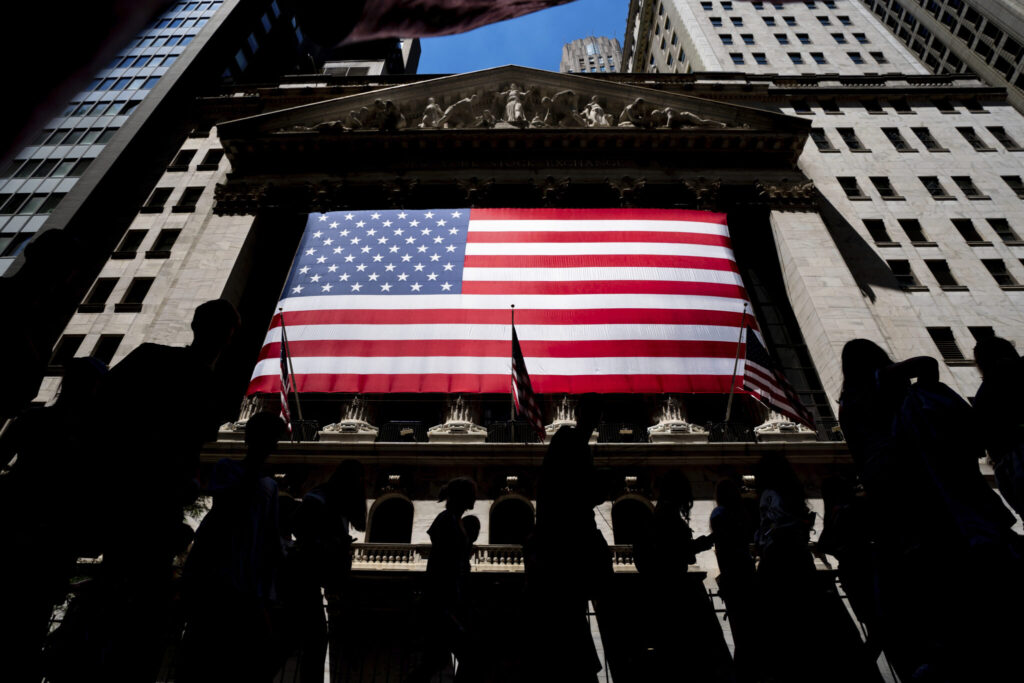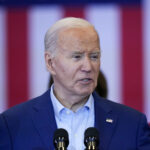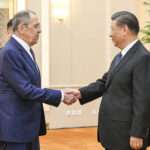Wall Street’s main indexes opened marginally lower on Tuesday in cautious trading ahead of Federal Reserve Chair Jerome Powell’s testimony before Congress that could shed more light on the central bank’s interest rate hike plans. More movement could be ahead later in the day after Powell testifies on Capitol Hill. The Associated Press has the story:
Wall Street stable, awaits Fed’s Powell hearings
Newslooks- NEW YORK (AP)
Stocks are holding relatively steady in early trading, as Wall Street stays in neutral following its jarring, roller-coaster start to the year. The S&P 500 was just slightly lower early Tuesday after barely moving the day before. The Dow Jones Industrial Average and the Nasdaq composite were little changed. Most of Wall Street’s wildest action this year has been in the bond market, and yields there were easing a bit to take some pressure off stocks. More movement could be ahead later in the day after the chair of the Federal Reserve, Jerome Powell, testifies on Capitol Hill.
Markets were mixed in muted early trading Tuesday ahead of Federal Reserve Chair Jerome Powell’s appearance before a Senate Committee, where he will likely be grilled about the central bank’s aggressive interest rate hikes that have only modestly curtailed stubborn inflation.
Futures for the Dow Jones industrials were flat and futures for the S&P 500 were up just 0.1% in premarket.
Powell’s first appearance before Congress in nine months coincides with recent signs that the economy remains resilient and inflation still far too high. In the past year, the Fed has raised its benchmark interest rate at the fastest pace in four decades, to about 4.6%, its highest level in 15 years. But consumer spending, hiring and growth have yet to cool.
Other Fed officials’ comments recently have led to big swings in markets, as traders try to get ahead of the next moves by the Fed.
The stock market has found some footing over the last week after a swift rise at the start of the year gave way to a sharp tumble. Driving the movements are high inflation and expectations of what the Federal Reserve will do about it.
Early in the year, stocks rallied and bond yields eased as hopes rose that cooling inflation would get the Fed to take it easier in its hikes in interest rates. Then, stronger-than-expected reports on the economy raised worries that inflation was not cooling as smoothly as hoped.
While that calmed worries that a recession is looming, it also forced Wall Street to raise its forecasts for how high the Fed will take interest rates. Higher rates can drive down inflation, but also hurt prices for stocks and other investments and can create a recession in the future.
The Fed has pulled its key overnight rate to a range of 4.50% to 4.75%, up from virtually zero at the start of last year, in its fastest set of hikes in decades. Last month, it dialed down the size of its increases and highlighted progress being made in the battle to get inflation lower.
But that was before last month’s hotter-than-expected data on inflation and other measures of the economy. Wall Street now is bracing for at least three more hikes and the possibility the Fed could also ratchet the size of the increases back up.
There are three potentially market-moving labor-related reports this week, including Friday’s closely-watched monthly jobs report. If the reading is stronger than expected, particularly if it shows a big gain in wages, Wall Street may raise rate expectations even higher.
The Fed has been trying to cool growth in wages to remove pressure on inflation, which remains far above its 2% target, and blowout figures could cause it to get more aggressive about rates.
The Fed’s next move on rates will arrive later this month. Two inflation reports next week — one on wholesale prices and one on retail prices — could play into the Fed’s decision.
In corporate news, WW International, better known as WeightWatchers, said it is getting into the prescription weight loss business with the purchase telehealth platform Sequence. WW will pay $106 million for Sequence, which served about 24,000 members across the U.S. as of February.
Shares of WW jumped almost 14% before the market opened on Tuesday.
In Europe at midday, France’s CAC 40 and Germany’s DAX both inched back 0.1% and Britain’s FTSE 100 lost 0.2%.
Japan’s benchmark Nikkei 225 rose 0.3% to finish at 28,309.16. Australia’s S&P/ASX 200 gained 0.5% to 7,364.70. South Korea’s Kospi added less than 0.1% to 2,463.35. Hong Kong’s Hang Seng lost earlier gains to finish down 0.3% at 20,534.48, while the Shanghai Composite slipped 1.1% to 3,285.10.
Treasury yields held fairly steady following their own roller-coaster movements this year. The yield on the 10-year Treasury inched back to 3.94% from 3.96% late Monday. The 2-year yield held at 4.87% from Monday.
In energy trading, benchmark U.S. crude fell 42 cents to $80.04 a barrel in electronic trading on the New York Mercantile Exchange. Brent crude, the international standard, lost 45 cents to $85.73 a barrel.
In currency trading, the U.S. dollar declined to 135.20 yen from 135.93 yen. The euro cost $1.0666, down from $1.0685.







